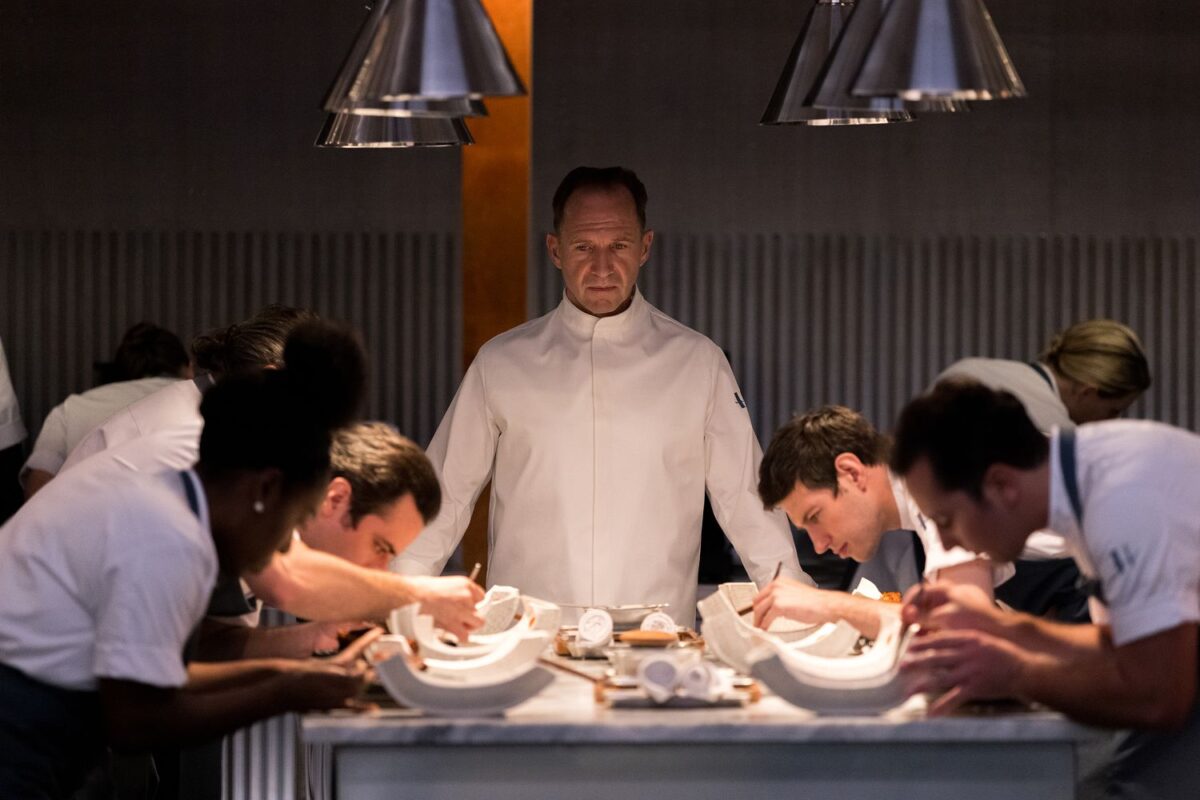When I first saw the trailer for The Menu, I felt a rush of adrenaline. I tell you this because I haven’t felt such excitement to see a movie for months now, tired of the cheesy love-triangle rom coms and meaningless “carpe diem” nonsense. The trailer had everything I wanted: suspense, drama, and thrill without giving away the main plot points. Perfection itself. So, I found myself in the theater that Thursday night, November 18th, with a large popcorn (extra butter, obviously) Peanut M&Ms and a Sprite. I was ready to be enthralled.
Warning – major spoilers ahead. It still won’t ruin the movie though, go watch it.
The premise is simple. The crème de la crème of society, also known as the filthy rich, arrive at the highly-exclusive and secluded Hawthorne island restaurant. To get in, you need to know someone, or be someone—it’s invite only. Our guest list includes a snobby food critic with her cowardly sidekick, three big-tech bros with their “do you know who we are” parade, a self-labeled food connoisseur who brings the sharp Anya Taylor-Joy as a last-minute plus one, a washed-up actor, and the usual run-of-the mill corporate CEO with his wife who stays even though she knows he is a serial womanizer.
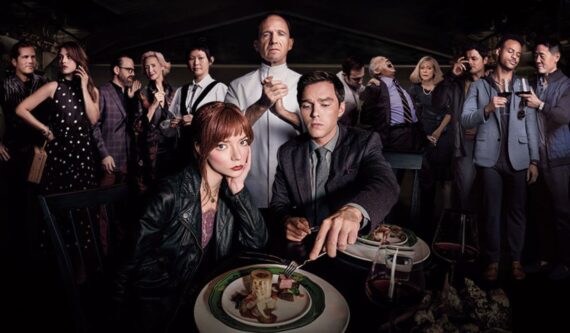
So, we’ve a group of pretentious pricks trying to one-up each other in their culinary knowledge on a secluded island eating an eight course meal by a Michelin-star chef. What could possibly go wrong? Well, everything and anything.
As each course goes by, the chef’s sinister intentions slowly start to become apparent. The film does a great job of using our knowledge of the filthy rich—the more money you have, the more you begin to slip up morally. Exploitation, fraud, being unfaithful aren’t used to surprise us, we expect these revelations coming in.
Anya Taylor-Joy’s character is used brilliantly to mirror the viewer’s deep skepticism about the guest list and joins us in mocking the reverence given to the chef and his work. Our chef, the mysterious Julian Slowik, explains each dish’s purpose, meaning and story behind it in a delightful way—so much so that I found myself becoming a pretentious food know-it-all as I nodded in agreement to everything the chef said.
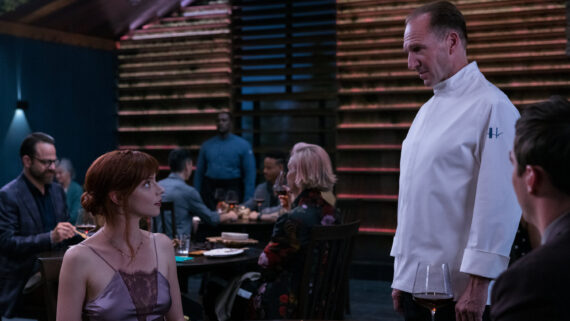
His mix of zenlike charm with razor-sharp ears and, of course, murderous tendencies are startlingly disarming, making him the most interesting character in the movie. Each time he clapped, I jumped and so did all the guests because it marked the beginning of a new course and maybe a new murder. The chef builds tension artistically, from a “I take my food way too seriously” vibe to a “I was abused as a child and now I am going to kill you all” vibe.
The banter is sharp, the humor is witty and the conversation is anything but boring. Although the chef and his sous-chefs turn out to be psychotic murderers on the hunt for the perfect menu, which involves turning the guests into smores, I found it hard to hate him. Each time he asks guests to “please don’t just eat, really savor your food,” I began savoring my $8 concession stand popcorn and immediately regretted it.
The dishes are organic, local, and made to reflect the nature around them. Think LA meets Gordon Ramsay and Marco Pierre White. There’s seafood with frozen seawater melting to naturally flavor it, and a bread dish with no bread, just the side emulsions and butters. The cinematography is exquisite, and even when a mini Squid Game situation breaks out, the movie continues to introduce courses with the utmost tranquility.
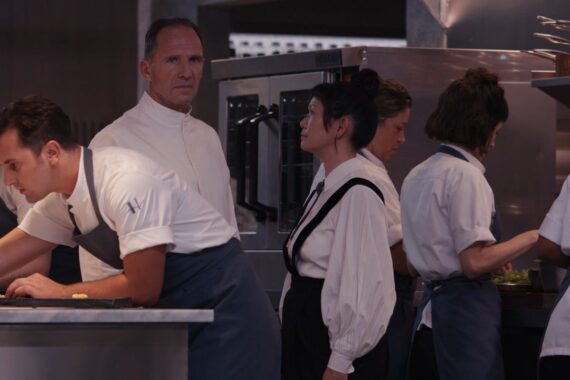
There is one scene especially where the guests realize what is going on. It is shot as the sun is setting behind them, the ocean mirroring the beautiful warm colors. But in the restaurant, our guests are eating tortillas that have images on their secrets: false bank accounts, prostitutes fulfilling married men’s dark fetishes and a terrible movie an actor starred in. The movie is, at face-value, an obvious commentary on socio-economic status and classism. But it goes much further than that, and that is where all the magic lies.
The movie is a genius take on capitalism and is unabashedly bold in its take. The chef, almost portraying the stereotypical “I once had dreams but had to abandon them for the rat race” turns the tables around and presents us with one of the most complex characters I have witnessed in the horror-comedy genre. He was once just a boy working at a cheeseburger restaurant and was happy and proud about the food he served.
Then, tragedy hits him. He has to almost kill his father to save his mother, who develops PTSD and becomes an alcoholic. He needs to survive, but despite it all believes in the power of food and the joy it brings people. Food is the one thing that unites the world, the rich and the poor, the powerful and the powerless, and he brings them all together to enjoy that food.
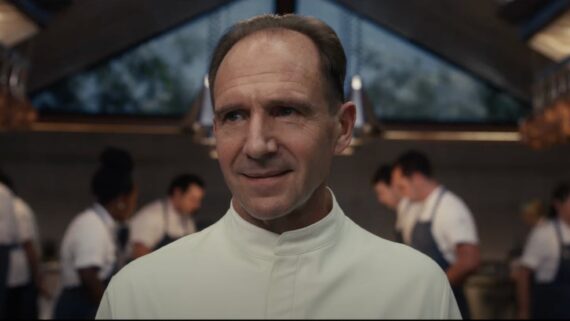
It was supposed to be a love language. But, artists everywhere are compromising their art for the money: the actor works in terrible films for the money, his sous-chef doesn’t want his life but his fame and respect, and the food critic finds immense pleasure in making business deals instead of writing honest reviews. But that is not the only place where people are constantly exploited. The tech bros commit fraud and corporate espionage, but are ready to throw each other under the bus if they are caught.
The chef uses the system to overthrow that system. He played the game, and he played it efficiently. He became the person everyone wanted him to be—the curator of overpriced food for pretentious meals and small portions, a puppet to the restaurant’s owner who controls the guest list, and at the mercy of food critics who truly do not seem to understand the point of food. We may accuse the movie of being anti-men, but it does a beautiful job of overcoming that objection by having the chef’s two right-hand women support him.
To put simply, it is not a gendered narrative, or an exploration of the rich versus poor. It is a commentary on capitalism and how our society pushes us into the rat race, forcing us to shed individuality and constantly seek more than what we have. We are greedy, ungrateful statistics posing as people in this rigged world. The film doesn’t allow the viewer to stray from its central idea—the ultimate undoing of capitalism.
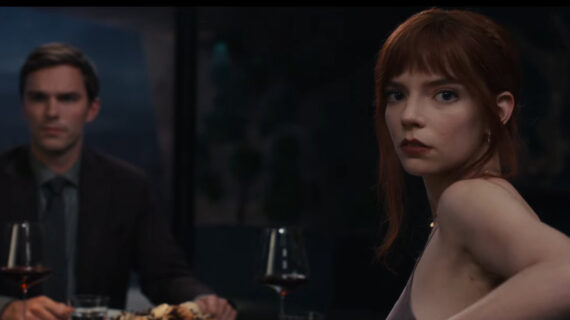
It also has undertones of moral teachings and an almost philosophical ending. We see our guests die along with the chef and all the other staff. But were they even happy in the first place? The rich CEO’s wife should have everything she wants, but she sits there confused yet willing to forgive her husband for cheating on her multiple times. A real life Khloe Kardashian—except she doesn’t blame Taylor-Joy for her husband’s serial womanizing and instead protects her.
All the guests have money, they have power, status, and an unbecoming need to one-up each other. The CEO comes to the restaurant about seven to eight times a year, but still cannot name a single dish he ate the last time. All this money and power, and still they aren’t happy. They lack real connections with each other, are plagued by horrifying secrets that made them who they are today and, most importantly, are absolutely miserable.
So does being the elite of society truly make you better off? The Menu tells us it really doesn’t. Yet in all of these serious and challenging themes, the movie manages to bring about comedic relief through its clever humor and ironic dialogue.
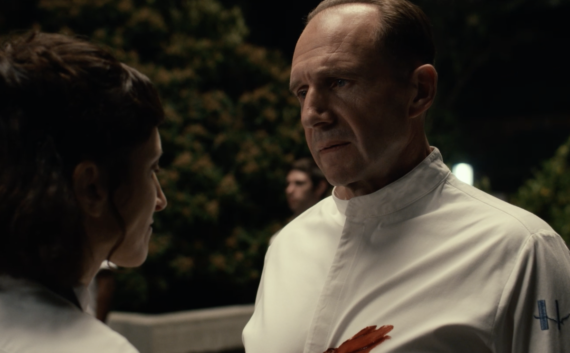
The ending of the movie was executed flawlessly. The only person who survives is Taylor-Joy, because she truly enjoyed her work too before she was ruined by the elite. The chef considers her of a similar kind and allows her a chance to die with the chefs instead of becoming s’mores like the rest of the guests. Taylor-Joy brilliantly plays the chef and tells him she does not like his food and wants to send it back.
I nearly cried at that scene, because Fiennes displays his hurt and sadness at disappointing a customer. She asks him to make her a cheeseburger: “I don’t want some deconstructed bullshit. I just want a good, traditional cheeseburger.” He charges her $9.99 for the burger and fries. Then she says she wants a to-go box and leaves him a tip. She is allowed to leave and eats her burger on the boat while she watches the restaurant go up in flames.
